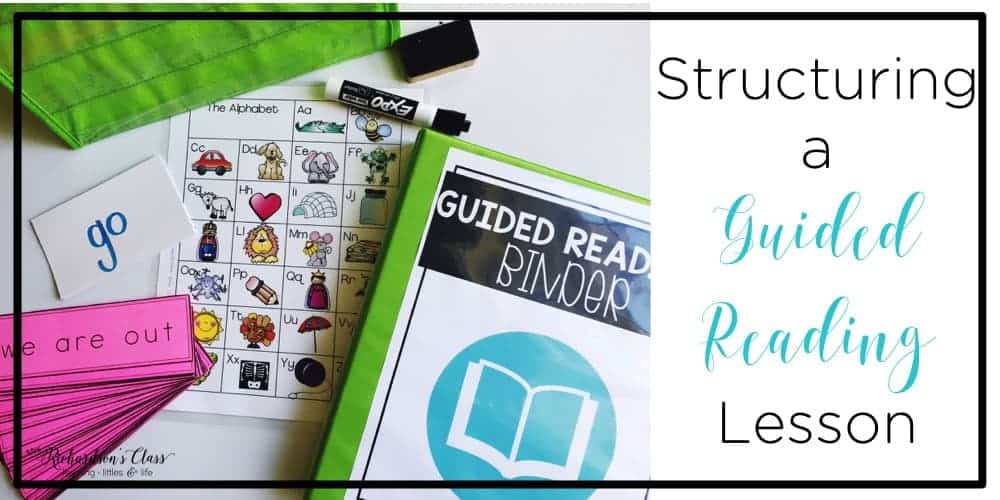
Teaching and structuring a guided reading lesson can seem overwhelming at first. I know that when I sat with my kids for the first time, though I had seen a great model, I was so worried about fitting it all in. I wasn’t sure if I was even teaching what I should. I felt like I had no clue
Eventually, I broke it down, found my focus for each leveled group with the resource cards. I got into a rhythm. My groups were rocking and rolling!

Let’s take a look at what this time looked like in our classroom and how I structured our time. Every classroom is different. There might be something else that works best for you and your students, but overall, these are areas that everyone is touching on.
Also, keep in mind that the purpose of guided reading is for the teacher to coach students during reading time.
When students come to my table, I want everything ready to go because I do not have a minute to spare. I generally have:
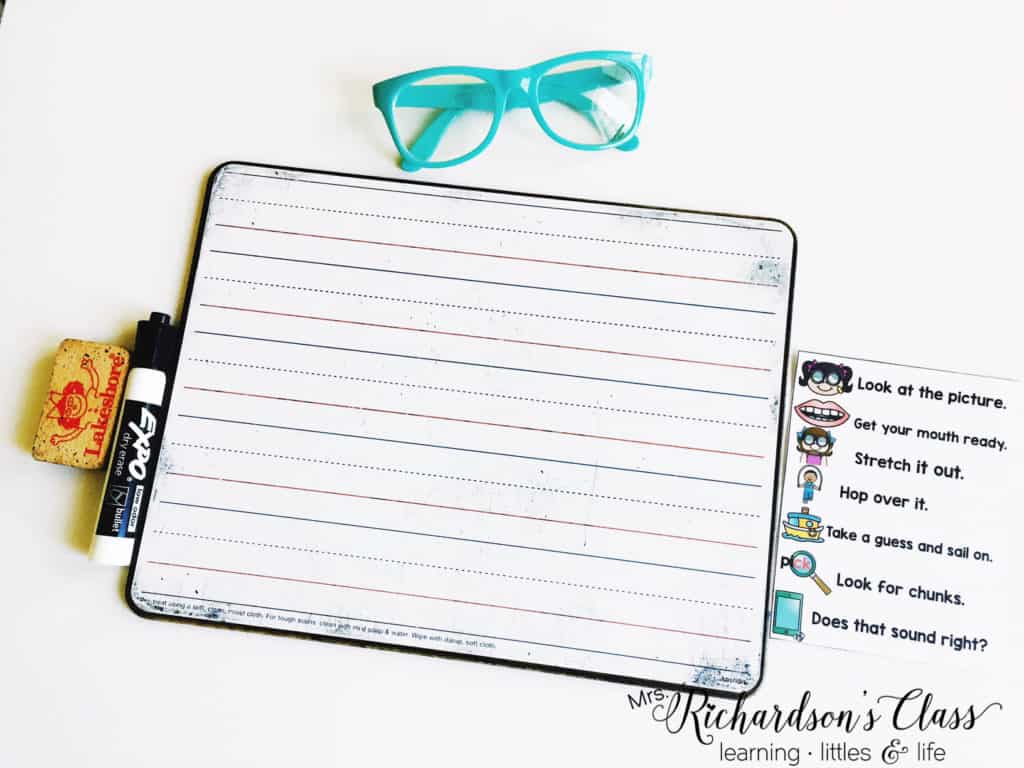
Besides the set of leveled readers for that group on hand, the other resources I like to keep handy and have set up for the students are:
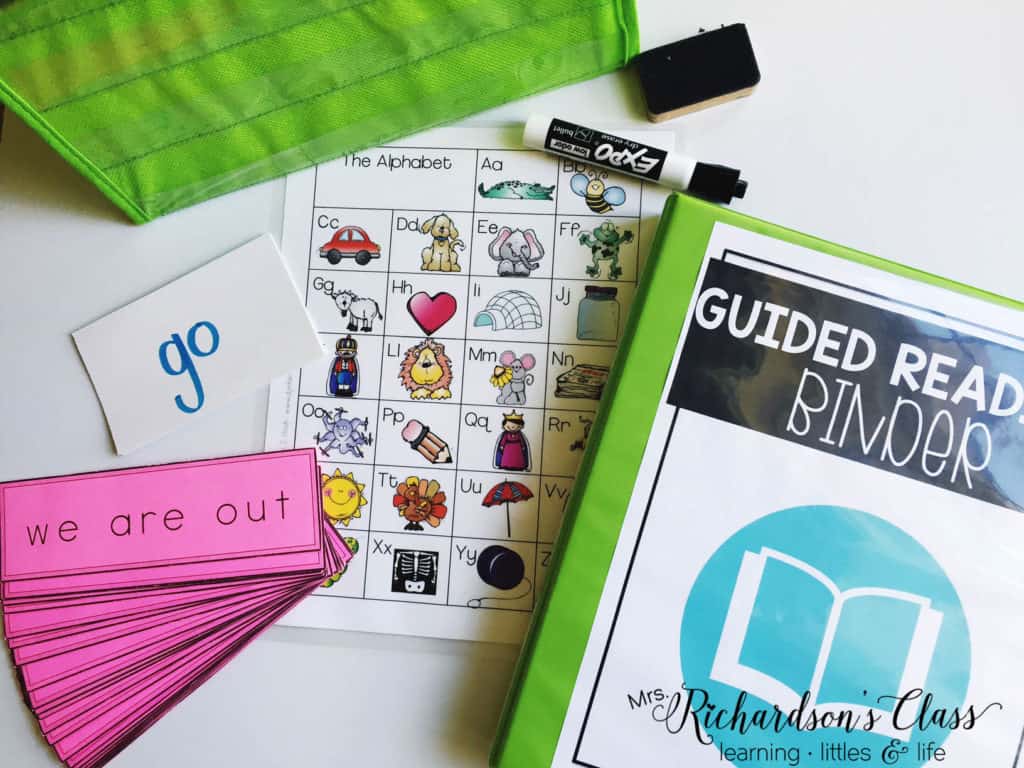

Here is a quick overview of our 20 minutes together.
Let me break it down a bit.
When students first come to my table, I have them “warm up their brains” by re-reading the book they have been taking home. If I choose, I could do a running record at this time on a student, but keep in mind that this is not a cold read, meaning it’s on a text that the student has seen, read and re-read at home several times. It’s not an accurate measure of their independent reading level.
We then place our books on the floor and do word work together. This varies based on each group’s reading level. For some, it’s simply us using the alphabet chart and reading through it together as we chant, “Apple, apple. /a/, /a/, /a/.”
For others, they may sort their alphabet letters in order and then we may do a short activity to make words.
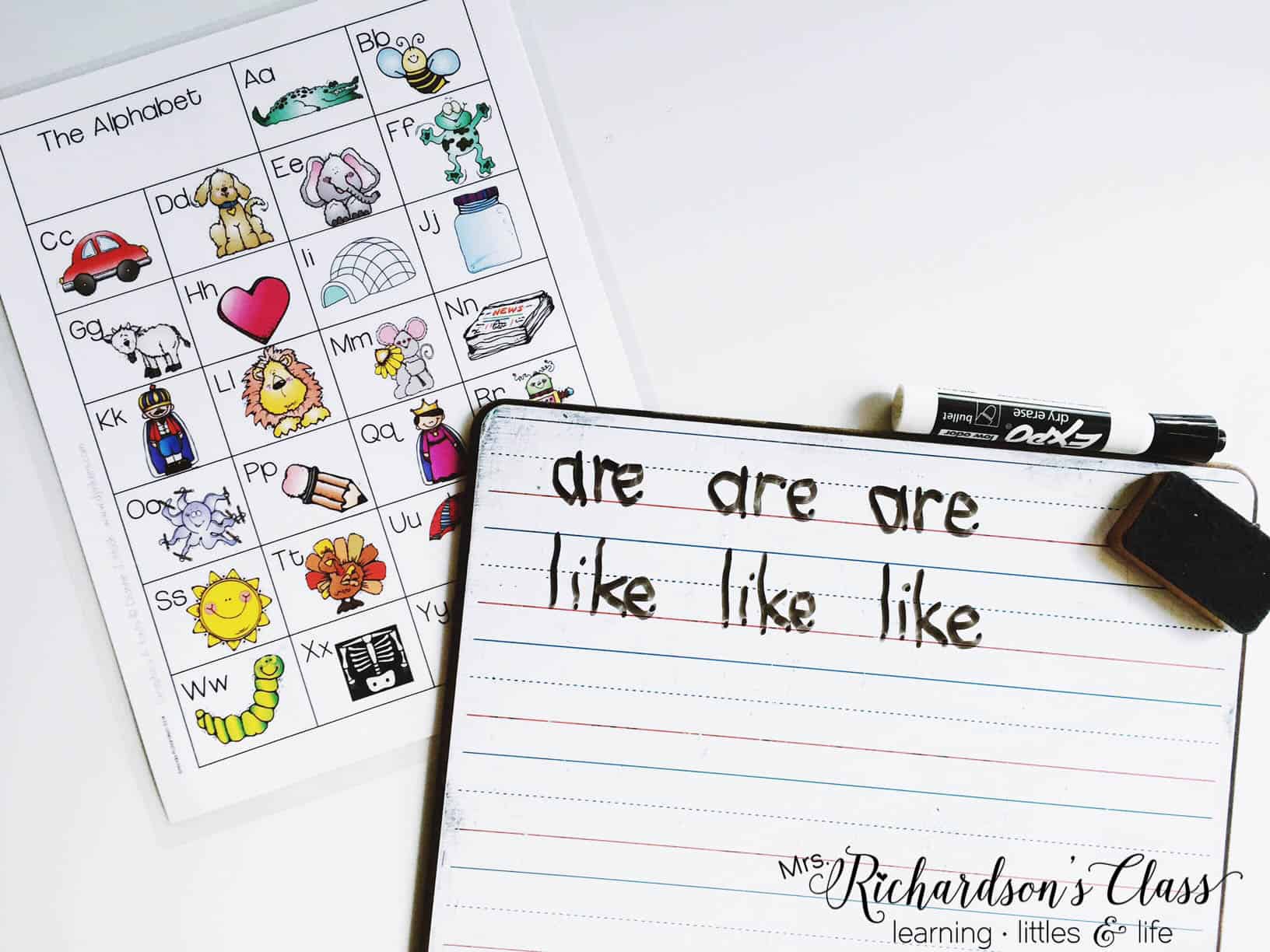
For all, I will review sight words that are found in the text we are going to read for that day. I will show them the sight word cards or they will find the sight word on the word wall, write it three times fast, and then we will read it three times fast.
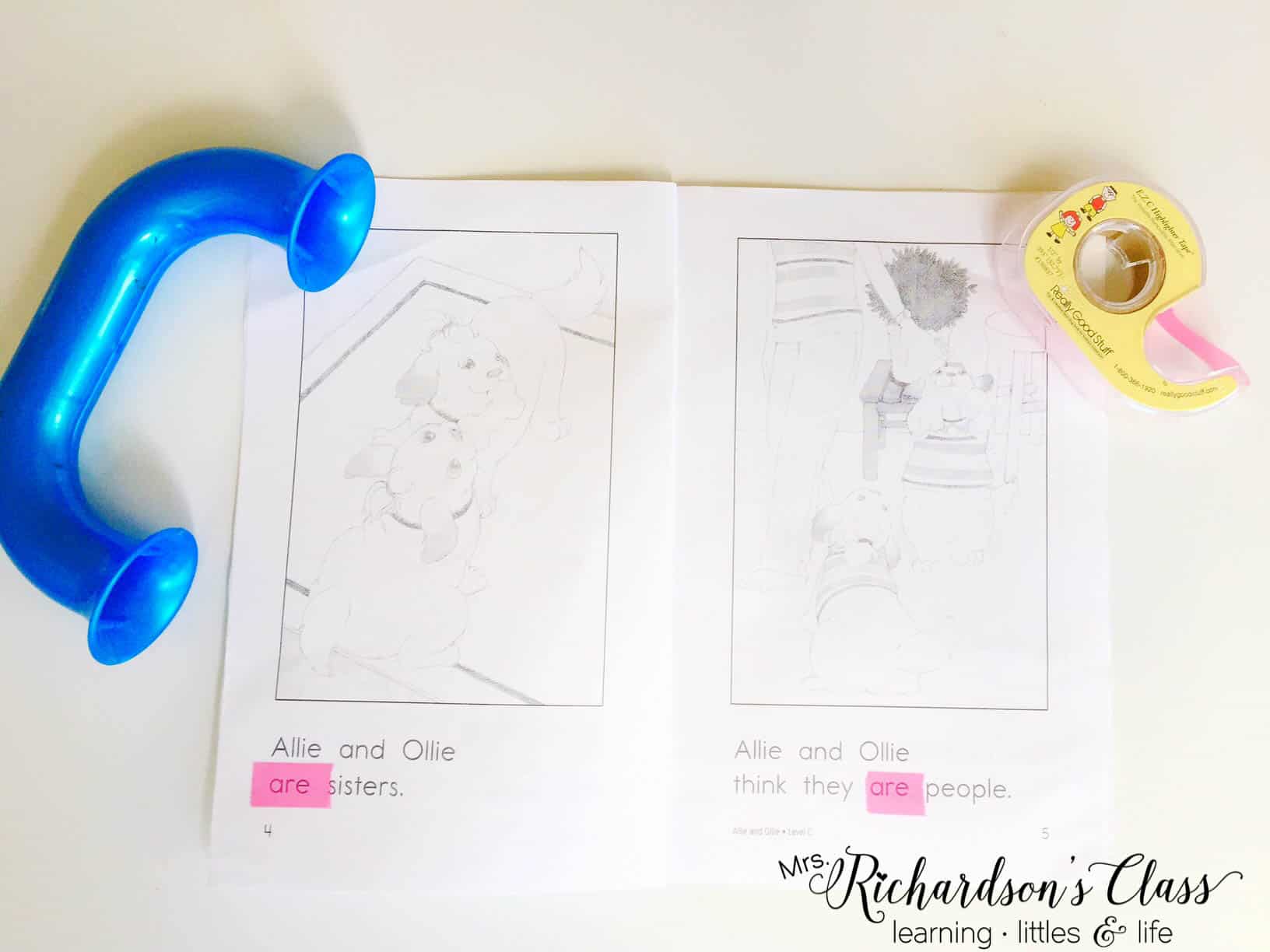
At this point, I will introduce the students to the book. For example, “Today we are going to read a silly book about two dogs who think they are people!” I tell them that the sight word ____ is in the book and we then go on a sight word hunt with highlighter tape looking for that word.
I would then prompt them to make a connection and help them predict what they may read about. “Have you ever seen a dog act like it was a person? What did it do?” I would allow the students to share.
Next, I would allow the students to take a picture walk through the book and talk about what they see the dogs doing. This is great for ELLs because it helps them practice the vocabulary that they will soon read. It also serves as a time for me to correct if needed.
Finally, I will go over and introduce anything that might catch them off guard. For example, if there is a picture of a dog, but the page says “puppy”, I might review that a baby dog is called a puppy. I don’t want to set them up to fail, but I also don’t want to give them every word in the book that they will see. 😉
I then set the purpose for reading by saying, “Now let’s read to find out how the two dogs are like people. When we are done, we are going to make a list of things they did.” Students need to have an authentic purpose for reading and know what it is.
I then set the students free to read the book aloud in a whisper voice independently. They read the book three times. We love to use whisper phones for this! If you don’t have a full set of six whisper phones, don’t worry. They can take turns using what you have – that’s what my students did.
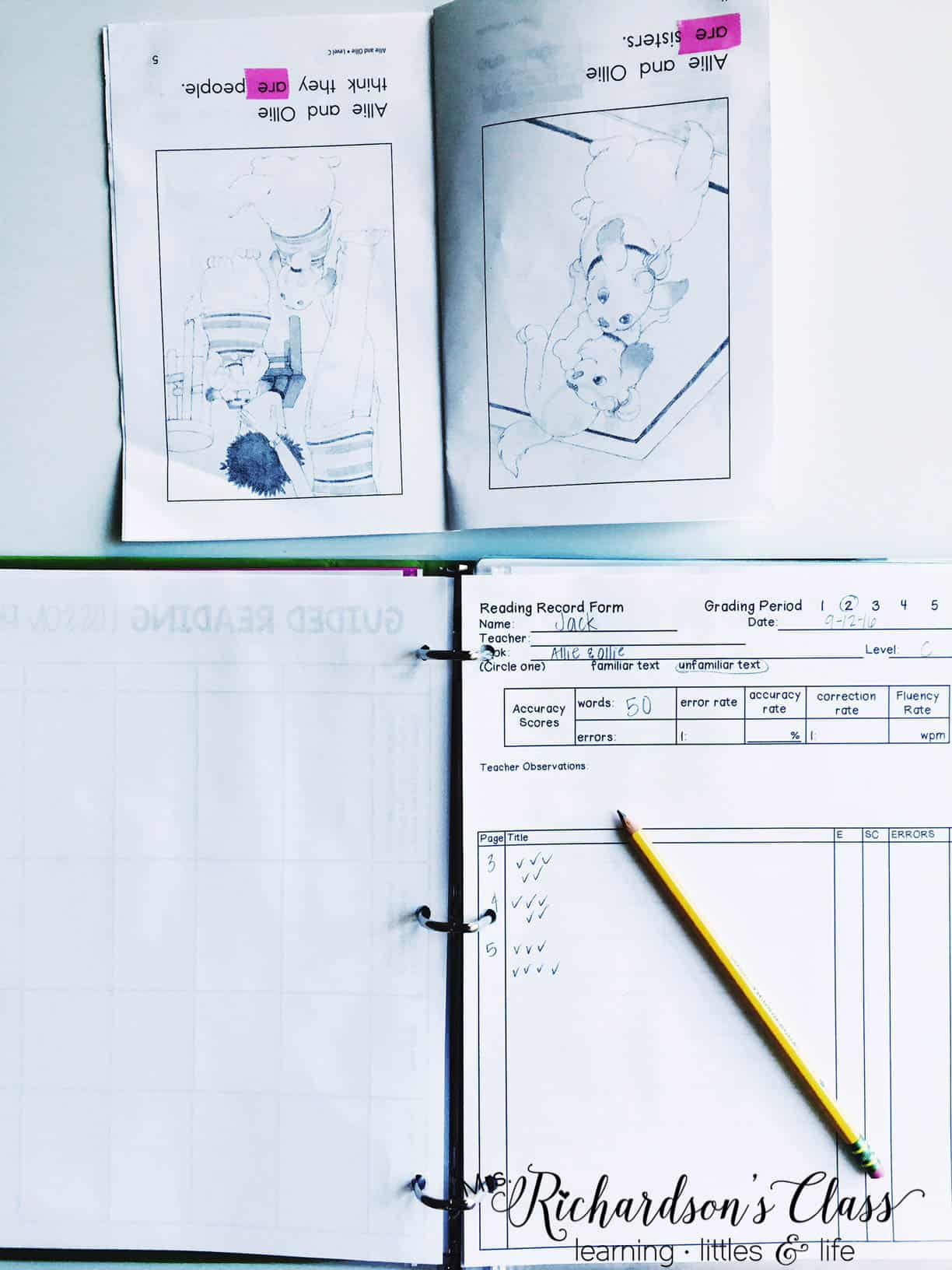
When the students are whisper reading, I listen to someone read and take a running record in my guided reading binder. I like to keep all of this organized in my binder. It’s easy for me to take a quick look and see who I haven’t listened to this week and who I have. After I take a running record, I usually listen to someone else read and simply take notes of things they are doing well and things they are not.
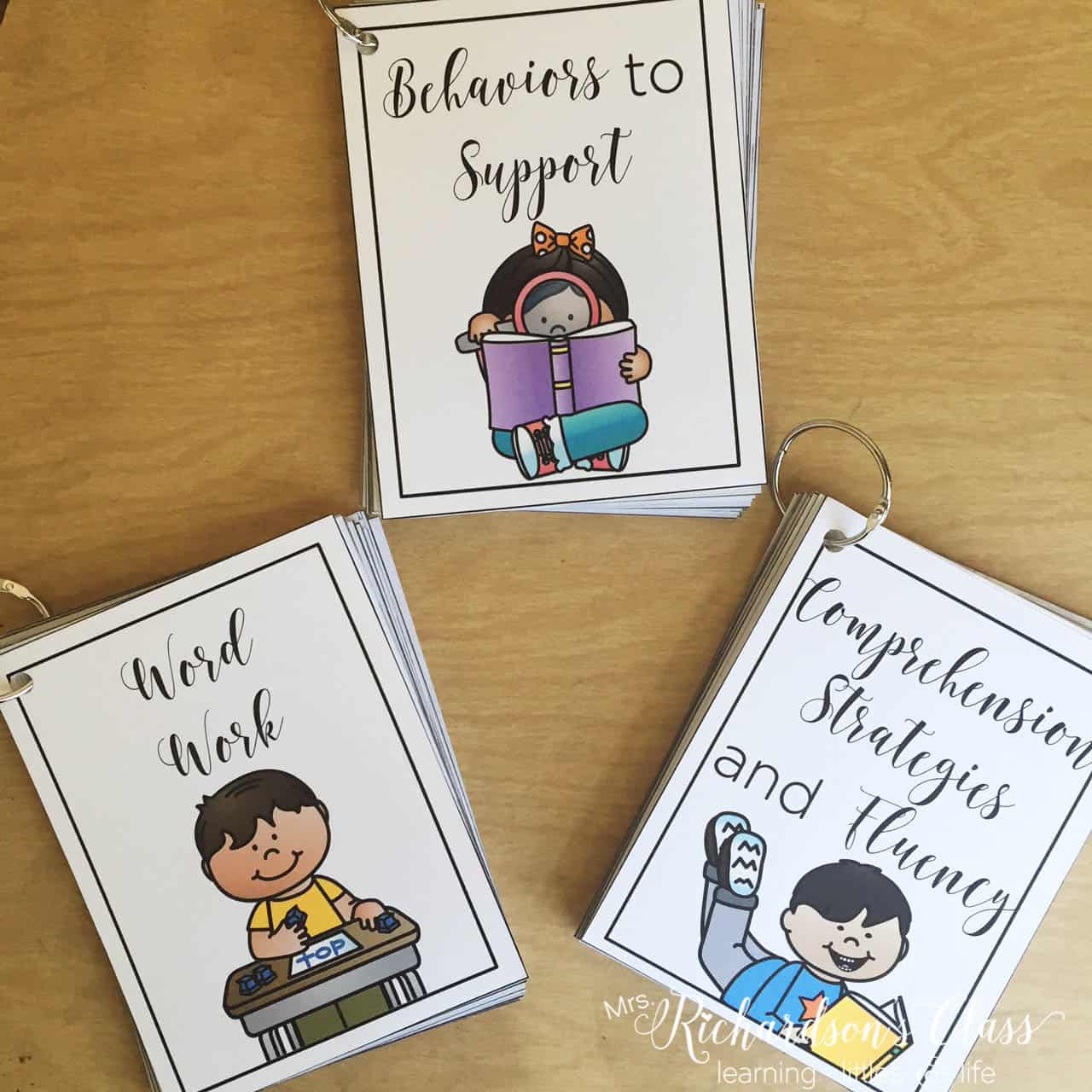
When everyone is done reading, we talk together about what happened in the book. Sometimes we do this by doing a 5 finger retell, retelling with a simple beginning, middle, end retell, or by talking about characters, setting, problem, and solution. This all just depends on their level. I like to use my Guided Reading Resource Cards to make sure I am targeting the right skills! Grab them FREE HERE.
Sometimes we will do quick writes. This is when I will have the students write one sentence to:
Not only do they love using the dry erase boards, but they love to write about what they just read. Since it’s simple and short, everyone gets to share their writing, and it’s always praised with specific feedback.
For example, “Joshua did a great job writing the sounds he heard.” “Kayla started her sentence with a capital letter.” “Niko did a fabulous job of making a vertical list.”
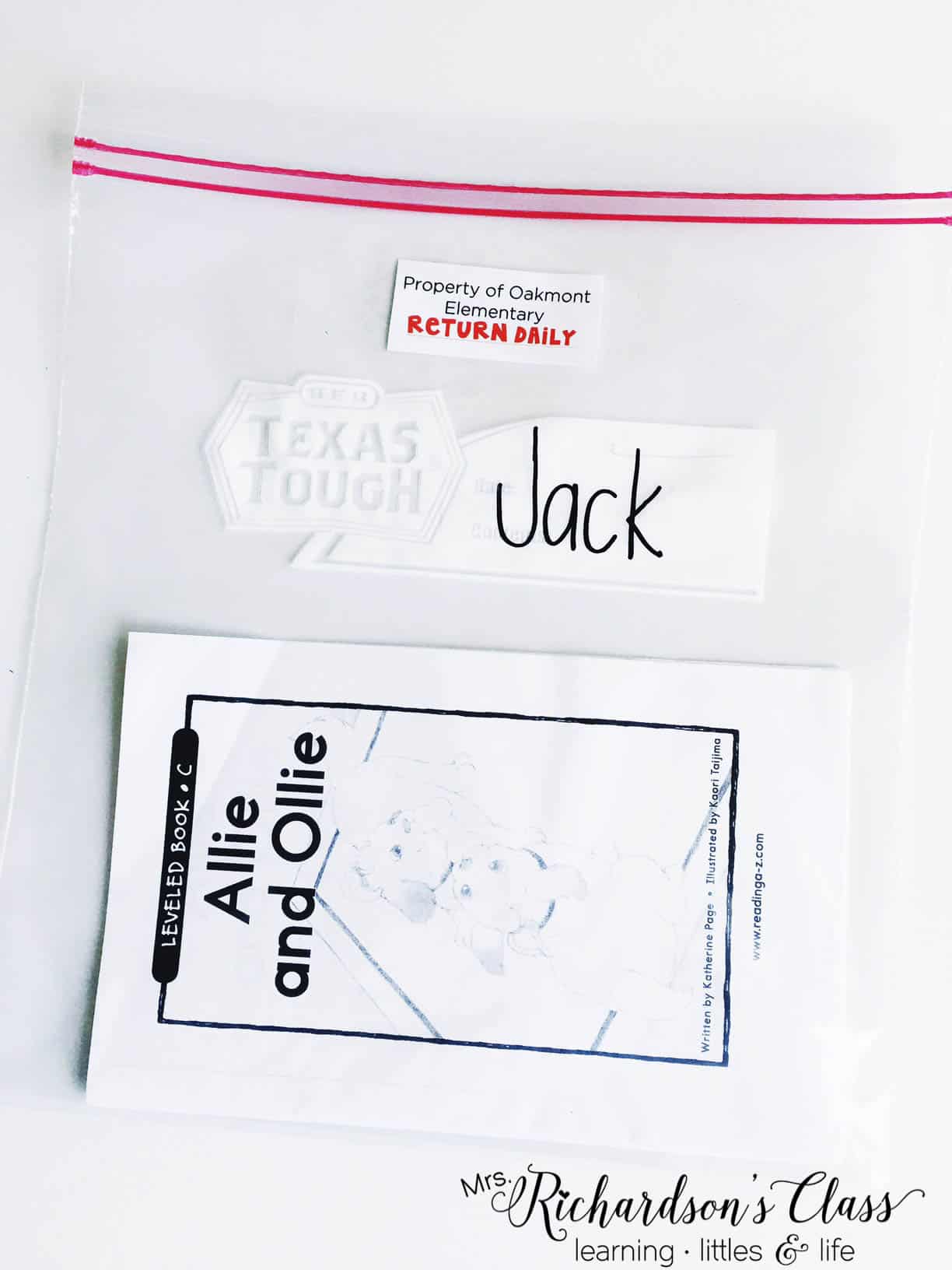
When we are done, each student takes home their new book in their book bag to read at home. I just ask that they read it three times at home. Not only are they taking home the text that I know they can read and be successful at, but if parents are not available to sit and listen to them read (though I hope they are!), students can STILL be successful because they have read with me. I am setting them up to succeed, not to fail.
After a few weeks of them seeing the table set and going through the routine this time flows well! Structuring a guided reading lesson and preparing beforehand just a tad bit helped so much.
It does take time and practice so don’t be discouraged! But nothing made my heart pitter-patter more than at the end of the year hearing a child say, “My favorite part of kindergarten was reading at Mrs. Richardson’s table.”
If you want to have guided reading made even easier, check out my leveled Guided Reading Kits for Kindergarten, First Grade, and Second Grade. Each kit has everything you’ll need to successfully implement a guided reading lesson including:
Grab yours today to help you learn how to successfully structure and implement a powerful guided reading lesson!